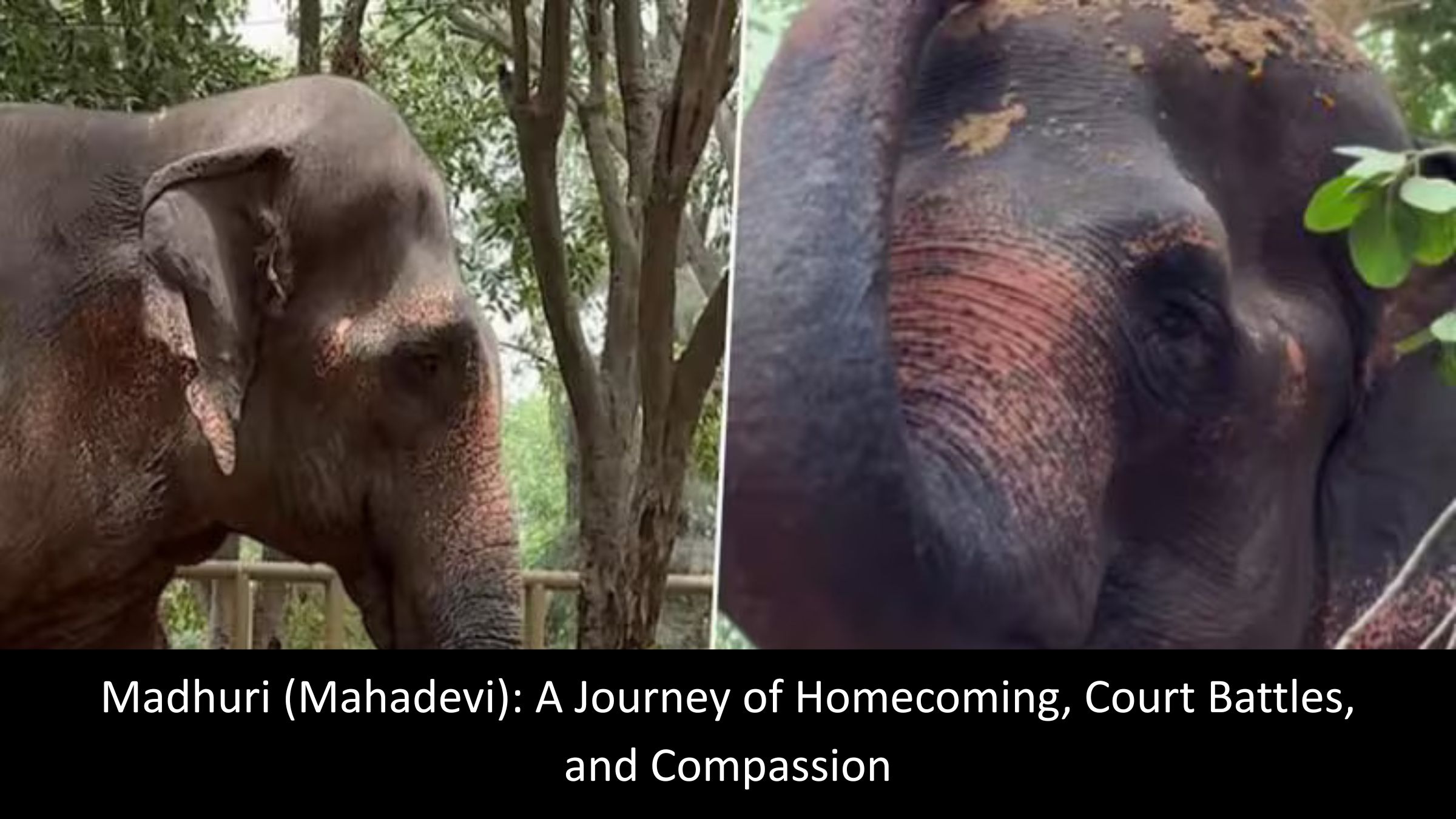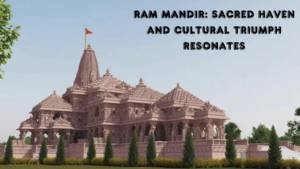Madhuri (Mahadevi): A Journey of Homecoming, Court Battles, and Compassion
1. The Emotional Farewell from Kolhapur
Madhuri—also revered as Mahadevi—spent over three decades at the Shri Jinsen Bhattarak Pattacharya Jain Math in Nandani village, Kolhapur. In July 2025, she was relocated to Vantara, an elephant rehabilitation centre in Jamnagar run by Reliance Foundation, following a Bombay High Court directive based on concerns raised by animal welfare organisations about her health.
Her departure triggered intense emotional scenes in Kolhapur: villagers, monks, and devotees poured out grief as they tearfully bade her goodbye — visuals that swiftly went viral on social media.
2. Public Outcry & the March for Mahadevi
Public sentiment swelled rapidly. On August 3, over 30,000 residents embarked on a 45-kilometer silent march from Nandani to the Kolhapur collectorate, led by former MP Raju Shetti, demanding Mahadevi’s return .
Over 2,04,421 petition forms — sanctified by the Jain Math’s chief — were sent to President Droupadi Murmu, reflecting widespread demand across Maharashtra and beyond. Youth-led gatherings broke into chants—“Dada, Mahadevi hathī ko wapas lao!”—even interrupting speeches by senior politicians like Ajit Pawar.
3. Vantara Clarifies Its Role
After initially staying silent, Vantara issued a statement acknowledging the emotional bonds the community shares with Madhuri. It emphasized that the relocation was carried out due to binding orders from the Bombay High Court, later upheld by the Supreme Court. The NGO asserted it assumed custody only as a court‐designated rehabilitation facility, and not at its own volition or design.
The statement included an apology: “Michhami Dukkadam” — acknowledging the emotional hurt experienced by the Jain community, and committing to transparent, respectful cooperation going forward.
4. Political Intervention: CM Fadnavis Steps In
Recognising escalating unrest, Maharashtra Chief Minister Devendra Fadnavis convened a high-level meeting on August 6 with officials from Vantara in Mumbai. He publicly shared that Vantara expressed willingness to support the Maharashtra government’s petition before the Supreme Court to facilitate Madhuri’s safe return to Nandani Math.
Additionally, the CM announced that the state government will file a review petition in the Supreme Court, backed by the Jain Math leadership, emphasizing legal remedies and expressions of cultural empathy.
5. A Proposal for a Local Rehabilitation Campus
In a constructive gesture, Vantara offered to establish a satellite rehabilitation centre near Nandani, on forest department–allocated land. Designed in consultation with the Jain Math and Maharashtra forest authorities, the facility would include:
- Hydrotherapy ponds for joint relief
- Larger natural enclosures for movement
- Laser therapy and physical rehabilitation facilities
- 24/7 veterinary care
This plan reflects recognition of community attachment and a collaborative path forward through enhanced welfare standards and local presence.
Why This Story Matters
- Religious and Cultural Identity
Madhuri represents an emotional and spiritual link for the Jain Math community and wider Kolhapur society. Her removal was seen not merely as an administrative matter but as a rupture in shared heritage. - Animal Welfare Ethics vs. Cultural Sentiments
The courts intervened believing that Madhuri’s health required professional care beyond what the temple environment could offer. Yet locals felt her relocation undermined their ability to care for her—and religious significance weighed heavily in the debate. The compromise proposed addresses both perspectives. - Grassroots Power in Action
The episode shows how mass mobilization—marches, petitions, youth activism—can influence political dynamics and prompt moral accountability from well-funded institutions like Reliance’s Vantara. - Precedent for Future Wildlife-Temple Interactions
Madhuri’s story may set a model for how temple or community elephants are managed going forward—balancing respect for tradition with mandated welfare oversight.
Way Forward: Keys to Resolution
| Stakeholder | Role and Perspective | Collaborative Potential |
|---|---|---|
| State Government | Filing review petition; mediating between sides | Drives institutional consensus |
| Jain Math | Emotional ownership and local trust | Central to negotiations and consent |
| Vantara | Court‑mandated custodian with veterinary expertise | Willing to partner; offers local rehab centre |
| Courts (HC & SC) | Enforce legal standards prioritizing welfare | Final authority on custody decision |
Maharashtra’s leadership appears committed to seeking legal pathways for Madhuri’s return, paired with technical solutions and shared custodianship—suggesting the possibility of resolution through legal review, accompanied by practical care infrastructure in Kolhapur.
Final Thoughts
Madhuri’s journey is emblematic of the complex, often emotionally charged terrain at the intersection of law, wildlife welfare, and religious sentiment. The collective display of grief and petition demonstrates community attachment, while Vantara’s response—apology, cooperation, and offer of a local facility—signals openness to resolving conflict respectfully.
As the state government proceeds with legal recourse, the proposed local rehabilitation centre may provide a middle path: maintaining Madhuri’s presence near her long‑time spiritual home while ensuring she receives state‑of‑the‑art medical care.
Only time—and the Supreme Court—will determine if Madhuri returns to Nandani. But the unfolding developments exhibit how public pressure, political responsiveness, institutional flexibility, and legal oversight can converge around a single elephant, becoming a case study in socially sensitive conservation.
Also Read :- https://hindustanslive.com/business/avatar-3s-dark-flame-varang-and-the-ash-people-revealed/











